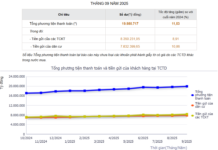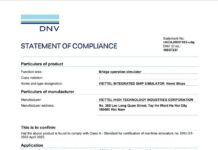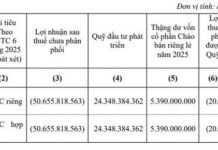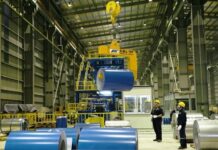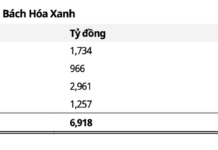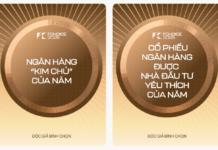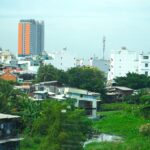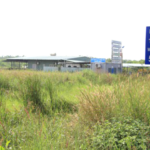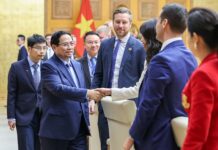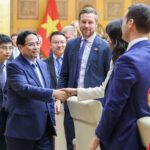On November 27, the Central Policy and Strategy Board, along with the Ho Chi Minh City Party Committee, People’s Council, and People’s Committee, jointly organized a seminar titled “Special and Superior Mechanisms and Policies to Attract Investment and Strategic Investors to Ho Chi Minh City in the New Context.” The event was co-chaired by Mr. Nguyen Thanh Nghi, Member of the Central Committee and Head of the Central Policy and Strategy Board; Mr. Nguyen Van Duoc, Member of the Central Committee, Deputy Secretary of the City Party Committee, and Chairman of the Ho Chi Minh City People’s Committee; and Mr. Nguyen Duc Hien, Deputy Head of the Central Policy and Strategy Board.
“A New Garment” Needs to Be Broad and Strong Enough
In his opening remarks, Mr. Nguyen Thanh Nghi emphasized the critical role of Ho Chi Minh City in Vietnam’s economy. The city serves as a growth hub and a major economic center, contributing over 23% to the national GDP.
According to Mr. Nguyen Thanh Nghi, Ho Chi Minh City is on its way to becoming “a regional and global financial, manufacturing, logistics, and innovation hub,” as affirmed by General Secretary To Lam to the city’s Party Committee and its people.
Resolution 98/2023 issued by the National Assembly on piloting special mechanisms and policies for Ho Chi Minh City’s development has brought about positive changes, aiding the city’s economic recovery and growth. However, it remains insufficient to address structural bottlenecks, particularly in attracting investment and strategic investors.
To align with its mission as the nation’s economic and innovation leader and to meet the demands of becoming a modern, innovative, and globally competitive metropolis, Ho Chi Minh City requires new, more breakthrough, and comprehensive mechanisms and policies. Resolution 98 is currently under review for amendments and supplements, including policies to attract strategic investors.
Chairman of the Ho Chi Minh City People’s Committee, Mr. Nguyen Van Duoc, stated that amending and supplementing Resolution 98 aims to provide the city with “a new garment” that is broad and strong enough to foster further development. Over the past period, the Ho Chi Minh City People’s Committee has actively collaborated with ministries and sectors to draft and finalize the National Assembly’s resolution amending and supplementing certain provisions of Resolution 98. To refine this draft amendment, the city seeks additional input on the necessity and solutions for effective implementation.
Specifically, Ho Chi Minh City aims to receive feedback on positioning strategic investors as key development partners. Additionally, the city continues to research and propose expanding the list of priority sectors and projects for strategic investors based on growth pillars. It encourages a policy sandbox mechanism, allowing flexible adjustments to development policies for new models and technologies, coupled with periodic impact assessments and risk monitoring. This is a crucial step for Ho Chi Minh City to become the nation’s “institutional laboratory.”
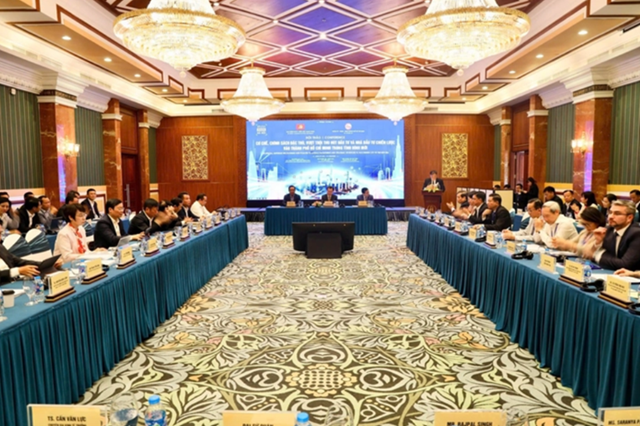 Scene from the Seminar “Special and Superior Mechanisms and Policies to Attract Investment and Strategic Investors to Ho Chi Minh City in the New Context.” Photo: MINH PHONG
|
Positioning Strategic Investors
Focusing on mechanisms and policies to attract strategic investors, Dr. Tran Du Lich, Chairman of the Advisory Council for the Implementation of Resolution 98, noted that the incentives in Resolution 98 still lack the strong motivation needed to attract strategic investors.
Dr. Tran Du Lich suggested categorizing projects into multiple groups based on priority investment sectors to develop policies on land, corporate income tax, personal income tax for experts, R&D support, workforce training, and simplified customs procedures for importing raw materials and exporting products in Ho Chi Minh City.
According to Dr. Tran Du Lich, the role of strategic investors should be appropriately recognized—not merely as investors in specific projects for business purposes, but as contributors to the state’s development goals. To attract leading global corporations to invest in strategic sectors such as chip manufacturing, semiconductors, AI, and digital infrastructure, competitive “superior” policies are required. He also recommended that the amended and supplemented Resolution 98 should only establish a policy framework and principles, delegating the authority to the City People’s Council to issue specific policies for each sector, field, and project.
Emphasizing that strategic investors are not just “large investors,” Dr. Nguyen Dinh Cung, former Director of the Central Institute for Economic Management (CIEM), clarified that they are also investors capable of driving structural shifts, technology diffusion, capital, and governance across Ho Chi Minh City’s economic ecosystem. Therefore, selecting strategic investors must be based on criteria that contribute systematically and long-term to restructuring, creating new growth drivers, and transforming and forming new growth models for Ho Chi Minh City’s economy.
“Ho Chi Minh City should also develop and apply quantifiable criteria for selecting strategic investors. These criteria may include investment scale, technological capabilities, R&D commitments, localization rates or the number of SMEs linked in the value chain, employment impact, budget contributions, and ESG (Environmental, Social, and Governance) indices,” suggested Mr. Nguyen Dinh Cung.
|
5 Upgrades to Resolution 98 Aiming for Ho Chi Minh City to become a creative super metropolis, Prof. Dr. Vu Minh Khuong from the Lee Kuan Yew School of Public Policy (Singapore) proposed five upgrades to Resolution 98. Specifically, establish the Southeast Regional Development Agency with the Ho Chi Minh City Development Bureau playing a core role; ensure strategic investors in Ho Chi Minh City enjoy competitive incentives on par with Singapore, Dubai, Ireland, and China’s free trade zones; allow the city to generate new revenue linked to endogenous development; and enable Ho Chi Minh City to pilot a robust sandbox mechanism. Additionally, establish a “co-creation and co-development” mechanism for Ho Chi Minh City and its ecosystem with 20-50 leading global corporations in strategic sectors. |
|
Mr. Nguyen Trung Chinh, Chairman of CMC Technology Group: Priority Land Allocation Currently, land rental costs remain a significant financial barrier for key technology investment projects. For instance, the lack of land rent exemptions or reductions during the construction phase increases initial financial burdens, impacting investment decisions. Therefore, additional land incentive mechanisms for strategic investors in key technology sectors should be included in the draft resolution amending and supplementing Resolution 98. Specifically, strategic investors should be prioritized for land allocation and infrastructure in high-tech parks, innovation zones, or industrial parks, or be allowed to lease infrastructure at preferential rates to implement strategic projects. They should also be exempt from land rent during the construction phase and for up to 15 years after the project commences operations… Dr. Nguyen Van Hoi, Director of the Institute for Strategy and Policy on Industry and Trade – Ministry of Industry and Trade: Regional Semiconductor Design Hub Ho Chi Minh City should position itself as a regional semiconductor design hub while developing high-end packaging and testing segments. The city boasts a high-quality workforce and an emerging semiconductor ecosystem at the Ho Chi Minh City High-Tech Park, home to Intel’s largest chip assembly plant globally and design companies like Synopsys and Marvell. These foundations position Ho Chi Minh City to become a destination for R&D and chip design activities. Mr. Dau Anh Tuan, Deputy Secretary-General of the Vietnam Chamber of Commerce and Industry: Long-Term Policy Commitments One of the biggest barriers preventing many strategic enterprises from investing in Ho Chi Minh City is policy inconsistency and unpredictability. For projects spanning decades and costing billions of USD, investors are not only concerned about current incentives but also the long-term sustainability of policies. Sudden policy changes in taxation, land, planning, or administrative procedures can disrupt an enterprise’s entire financial and operational plans. Therefore, Ho Chi Minh City should consider implementing a “long-term policy commitment” mechanism, ensuring principles such as non-retroactivity and no adverse changes to committed incentives. |
MINH CHIẾN
– 06:00 28/11/2025
Unlocking Innovation: How Can Ho Chi Minh City Become a Living Lab for New Economic Models?
Ho Chi Minh City has been entrusted with a unique role as the primary “policy laboratory” for green economy, green finance, and smart urban development. This distinction is both an honor and a significant test of the city’s ability to refine legal frameworks and ensure effective implementation.
Ho Chi Minh City: Voters Petition to Cancel Nearly 30-Year-Old “Frozen” Urban Development Project
The Sing Việt Urban Area project, spanning over 28 years, has left residents frustrated as their concerns, voiced across multiple levels, remain unresolved.






